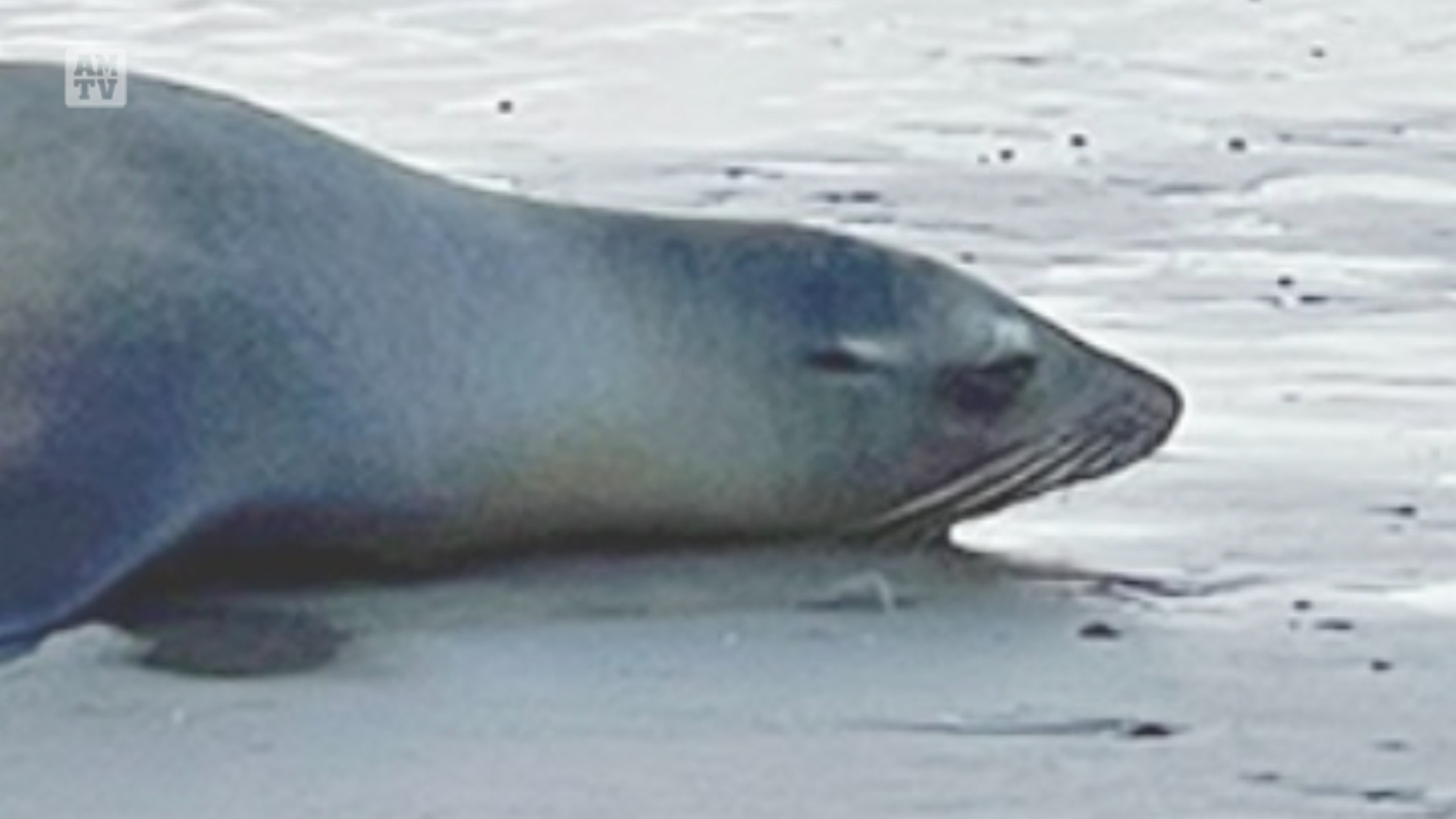AMTV/LOS ANGELES, June 30 – Large algae blooms off the California coast are endangering marine mammals and making some seafood unsafe to eat, according to several Los Angeles County departments.
Domoic acid, a neurotoxin produced during these blooms, enters the food chain when plankton eat the toxic algae, and it becomes more concentrated as it moves up the food chain. In large quantities, it can cause seizures and heart failure. While sea lions and dolphins can become symptomatic after eating contaminated fish like sardines, contaminated shellfish pose the greatest threat to humans.
Already, more than 100 sea lions likely suffering from domoic acid toxicity have stranded themselves on Los Angeles County beaches—and it’s likely that more will appear over the holiday weekend and Fourth of July.
Beachgoers should give sick sea lions at least 50 feet of space and immediately call the Marine Mammal Care Center (MMCC) at 800-39-WHALE (800-399-4253), according to the Los Angeles County Department of Animal Care and Control (DACC), which is supporting rescue efforts by coordinating resources. In Malibu, people should call the California Wildlife Center at 310-458-WILD (9453) and select option 1.
Sick sea lions may become agitated and aggressive, and contact with humans can result in injury to the person and severe stress and anxiety for the sea lion.
“Although you may want to help, the best and safest way to assist is to stay away and report the sick animal immediately,” said Marcia Mayeda, DACC Director. “Another way to help is to donate your time or funds to the MMCC and the California Wildlife Center.”
The number of sick sea lions is much higher than in previous years, overwhelming local marine rescue facilities like the MMCC in San Pedro. The Los Angeles County Department of Beaches and Harbors (DBH) worked with the MMCC to establish a temporary care facility on the Marina Peninsula, just north of Marina del Rey, to provide additional treatment areas for sea lions as they recover from their illnesses.
“We are working closely with the MMCC to ensure they have the necessary resources at their short-term beach care center,” DBH Director Gary Jones said. “We hope that beachgoers will give the rescuers and their patients plenty of room, even when the beach is crowded.”
Consuming domoic acid in high doses can also be fatal to humans, according to the Los Angeles County Department of Public Health.
“The public should take precautions to stay safe as California and Los Angeles County experience a bloom of toxic algae that is impacting marine life,” said Dr. Barbara Ferrer, Ph.D., M.P.H., M.Ed., Director of the Los Angeles County Department of Public Health. “Eating contaminated seafood can cause illness or even death in humans, and I urge residents to stay informed and check for state-issued shellfish advisories before consuming seafood and shellfish, such as crabs, clams, mussels and oysters.”
The California Department of Public Health (CDPH) monitors state fisheries for domoic acid and issues shellfish consumption advisories. Currently, CDPH has issued an advisory warning residents not to eat sport-harvested mussels, clams, or scallops from Santa Barbara County.
Symptoms of domoic acid poisoning, also known as amnesic shellfish poisoning, can occur within 30 minutes to 24 hours after eating toxic seafood, according to CDPH. In mild cases, symptoms may include vomiting, diarrhea, abdominal cramps, headache and dizziness. These symptoms disappear within several days. In severe cases, the victim may experience trouble breathing, confusion, disorientation, cardiovascular instability, seizures, excessive bronchial secretions, permanent loss of short-term memory, coma or death. Residents experiencing symptoms should contact their health care provider. Residents with severe symptoms should call 9-1-1 or seek immediate emergency care.
Los Angeles County DACC, DBH and Public Health will continue to monitor the situation.

